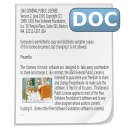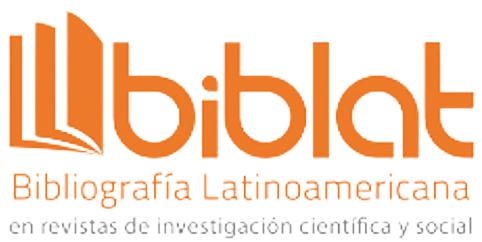Software Testing for Microservices
Abstract
Microservices have emerged as an architectural style that offers many advantages, but also poses challenges. One of these challenges revolves around testing, as an application may have hundreds or thousands of services running together, each requiring testing as they evolve. To overcome this challenge, automation takes on a key role, and along with it, the use of efficient and effective testing tools.
Downloads
References
Aderaldo, C. M., Mendonça, N. C., Pahl, C., & Jamshidi, P. (2017). Benchmark Requirements for Microservices Architecture Research. 2017 IEEE/ACM 1st International Workshop on Establishing the Community-Wide Infrastructure for Architecture-Based Software Engineering (ECASE), 8–13. https://doi.org/10.1109/ECASE.2017.4 DOI: https://doi.org/10.1109/ECASE.2017.4
Estructuración: definimos la lista de candidatos, y establecimos los pesos para cada criterio de selección, según su importancia relativa. Además, definimos las características a evaluar por cada criterio. Por ejemplo: el criterio de métrica tiene un peso de 30 sobre 100; si la herramienta genera métricas de trazados y tiempos obtiene un valor de 30, si genera únicamente una de las dos, se le asigna 15, y si no genera ninguna obtiene 0.
Antichi, G., & Rétvári, G. (2020). Full-Stack SDN: The Next Big Challenge? Proceedings of the Symposium on SDN Research, 48–54. https://doi.org/10.1145/3373360.3380834 DOI: https://doi.org/10.1145/3373360.3380834
Arcuri, A. (2019). RESTful API Automated Test Case Generation with EvoMaster. ACM Trans. Softw. Eng. Methodol., 28(1), 3:1--3:37. https://doi.org/10.1145/3293455 DOI: https://doi.org/10.1145/3293455
item BA, K., & Charters, S. (2007). Guidelines for performing Systematic Literature Reviews in Software Engineering. 2.
Gil, D. G., & D’iaz-Heredero, R. A. (2018). A Microservices Experience in the Banking Industry. Proceedings of the 12th European Conference on Software Architecture: Companion Proceedings. https://doi.org/10.1145/3241403.3241418 DOI: https://doi.org/10.1145/3241403.3241418
Gu, G., Hu, H., Keller, E., Lin, Z., & Porter, D. E. (2017). Building a Security OS With Software Defined Infrastructure. Proceedings of the 8th Asia-Pacific Workshop on Systems. https://doi.org/10.1145/3124680.3124720 DOI: https://doi.org/10.1145/3124680.3124720
Harsh, P., Ribera Laszkowski, J. F., Edmonds, A., Quang Thanh, T., Pauls, M., Vlaskovski, R., ... Gallego Carrillo, M. (2019). Cloud Enablers For Testing Large-Scale Distributed Applications. Proceedings of the 12th IEEE/ACM International Conference on Utility and Cloud Computing Companion, 35– 42. https://doi.org/10.1145/3368235.3368838 DOI: https://doi.org/10.1145/3368235.3368838
Hasselbring, W., & Steinacker, G. (2017). Microservice architectures for scalability, agility and reliability in e-commerce. Proceedings - 2017 IEEE International Conference on Software Architecture Workshops, ICSAW 2017: Side Track Proceedings, 243–246. https://doi.org/10.1109/ICSAW.2017.11 DOI: https://doi.org/10.1109/ICSAW.2017.11
Heinrich, R., van Hoorn, A., Knoche, H., Li, F., Lwakatare, L. E., Pahl, C., ... Wettinger, J. (2017). Performance Engineering for Microservices: Research Challenges and Directions. Proceedings of the 8th ACM/SPEC on International Conference on Performance Engineering Companion, 223–226. https://doi.org/10.1145/3053600.3053653 DOI: https://doi.org/10.1145/3053600.3053653
Heorhiadi, V., Rajagopalan, S., Jamjoom, H., Reiter, M. K., & Sekar, V. (2016). Gremlin: Systematic Resilience Testing of Microservices. Proceedings - International Conference on Distributed DOI: https://doi.org/10.1109/ICDCS.2016.11
MARTÍNEZ HERNÁNDEZ, Cristian Fernando. Evaluación de una herramienta de pruebas end-to-end para microservicios implementados en Java y Node. js.
Fowler, M., Lewis, J. (2018). Microservices. 1–15.
Zúñiga-Prieto, M., Insfran, E., Abrahão, S., & Cano-Genoves, C. (2017). Automation of the incremental integration of microservices architectures. In Lecture Notes in Information Systems and Organisation (Vol. 22, pp. 51–68). https://doi.org/10.1007/978-3-319-52593-8_4 DOI: https://doi.org/10.1007/978-3-319-52593-8_4
Las-Casas, P., Mace, J., Guedes, D., & Fonseca, R. (2018). Weighted Sampling of Execution Traces: Capturing More Needles and Less Hay. Proceedings of the ACM Symposium on Cloud Computing, 326–332. https://doi.org/10.1145/3267809.3267841 DOI: https://doi.org/10.1145/3267809.3267841
Copyright (c) 2023 Innovación y Software

This work is licensed under a Creative Commons Attribution 4.0 International License.
The authors exclusively grant the right to publish their article to the Innovation and Software Journal, which may formally edit or modify the approved text to comply with their own editorial standards and with universal grammatical standards, prior to publication; Likewise, our journal may translate the approved manuscripts into as many languages as it deems necessary and disseminates them in several countries, always giving public recognition to the author or authors of the research.
























